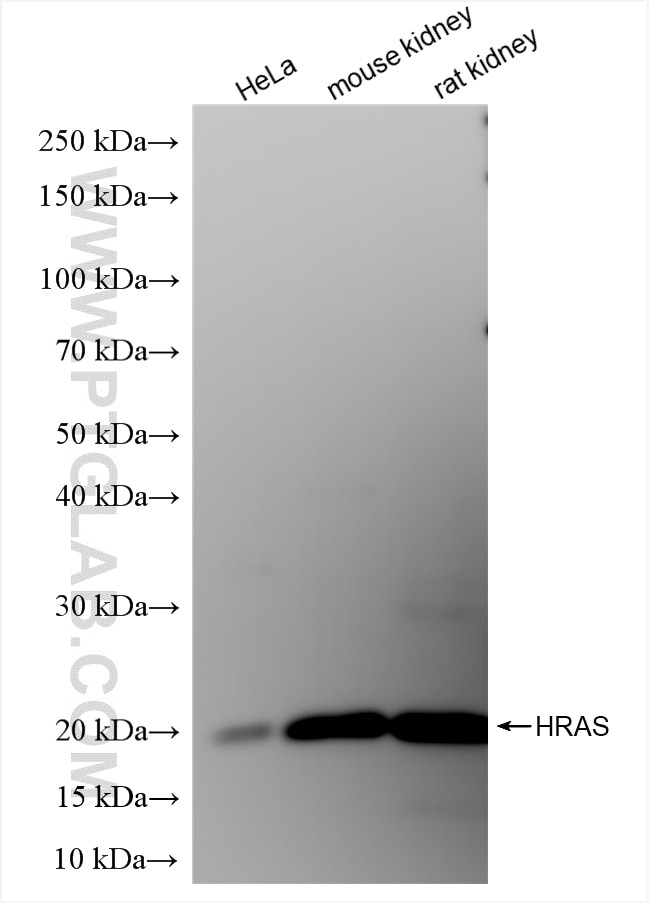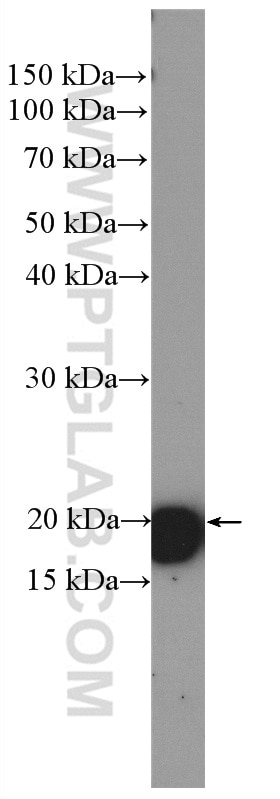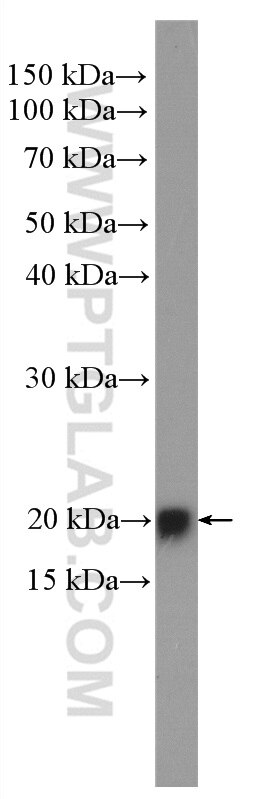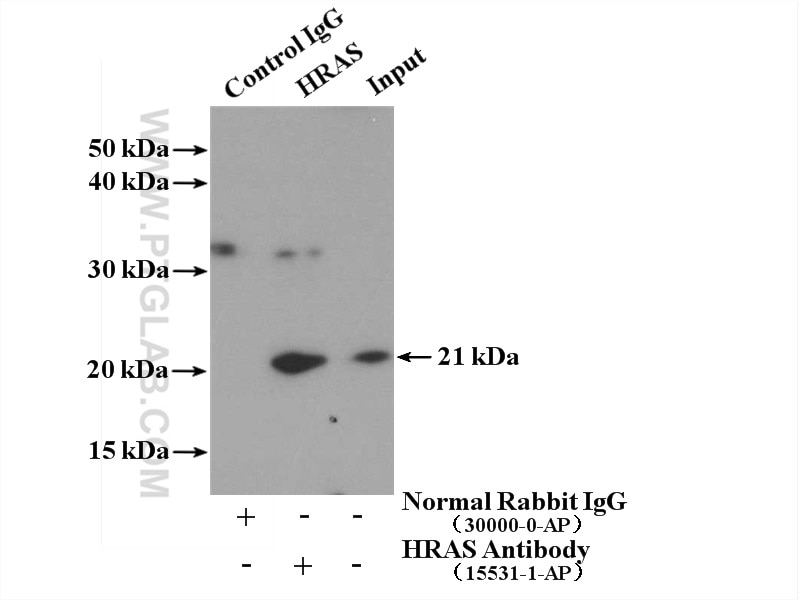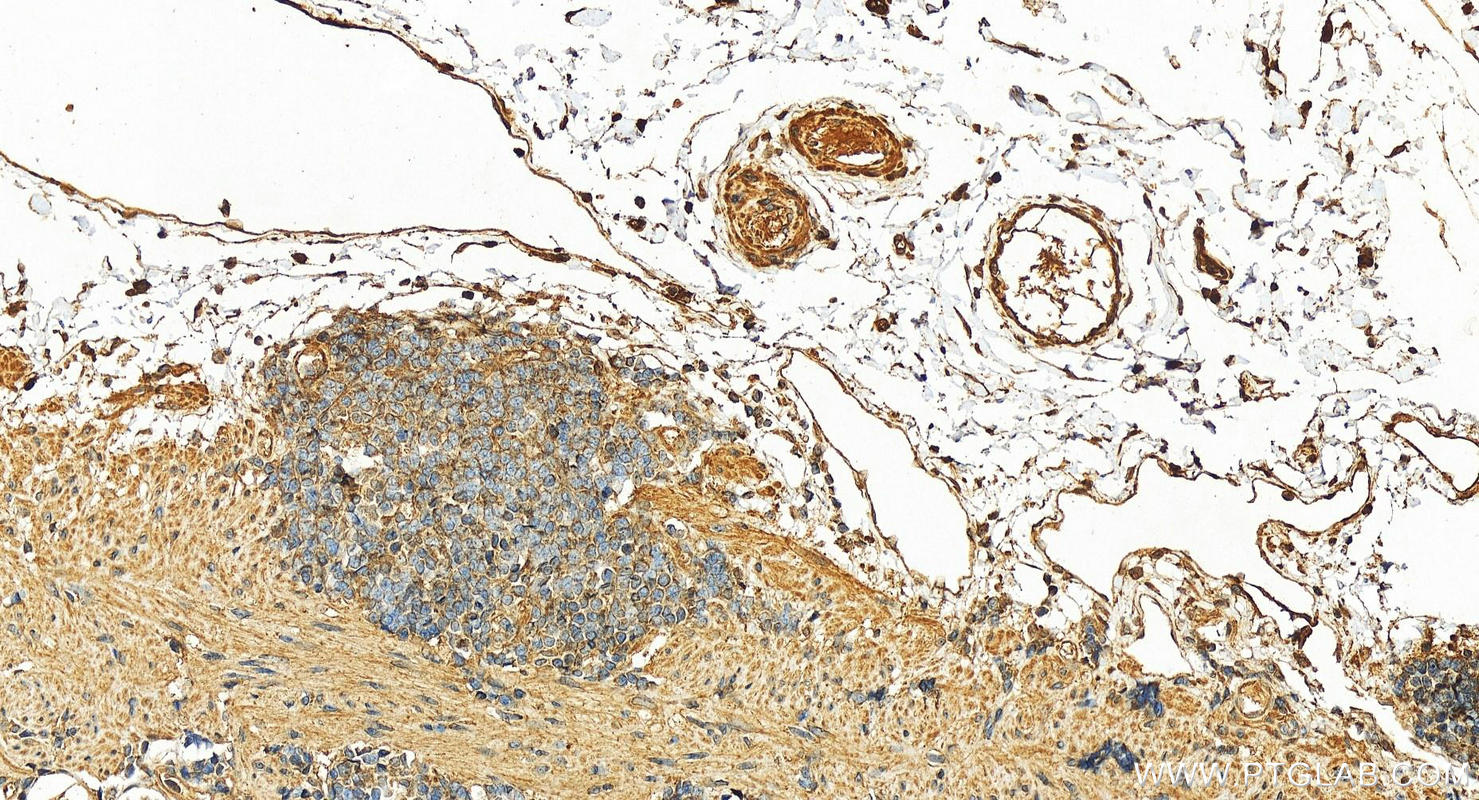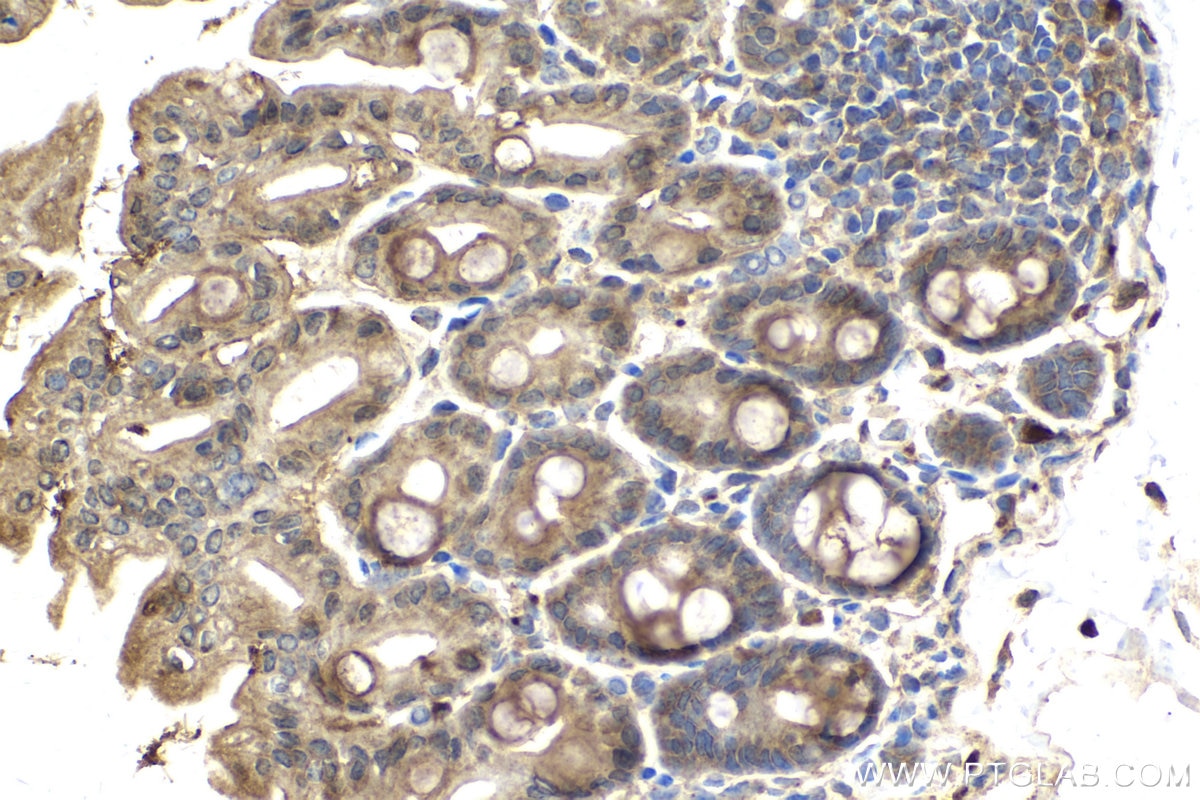Anticorps Polyclonal de lapin anti-HRAS
HRAS Polyclonal Antibody for WB, IHC, IP, ELISA
Hôte / Isotype
Lapin / IgG
Réactivité testée
Humain, rat, souris
Applications
WB, IHC, IP, ELISA
Conjugaison
Non conjugué
N° de cat : 15531-1-AP
Synonymes
Galerie de données de validation
Applications testées
| Résultats positifs en WB | cellules HeLa, cellules MCF-7, cellules PC-12, tissu rénal de rat, tissu rénal de souris |
| Résultats positifs en IP | cellules HeLa, |
| Résultats positifs en IHC | tissu d'estomac humain, mouse intestine il est suggéré de démasquer l'antigène avec un tampon de TE buffer pH 9.0; (*) À défaut, 'le démasquage de l'antigène peut être 'effectué avec un tampon citrate pH 6,0. |
Dilution recommandée
| Application | Dilution |
|---|---|
| Western Blot (WB) | WB : 1:500-1:2000 |
| Immunoprécipitation (IP) | IP : 0.5-4.0 ug for 1.0-3.0 mg of total protein lysate |
| Immunohistochimie (IHC) | IHC : 1:50-1:500 |
| It is recommended that this reagent should be titrated in each testing system to obtain optimal results. | |
| Sample-dependent, check data in validation data gallery | |
Applications publiées
| WB | See 3 publications below |
Informations sur le produit
15531-1-AP cible HRAS dans les applications de WB, IHC, IP, ELISA et montre une réactivité avec des échantillons Humain, rat, souris
| Réactivité | Humain, rat, souris |
| Réactivité citée | Humain |
| Hôte / Isotype | Lapin / IgG |
| Clonalité | Polyclonal |
| Type | Anticorps |
| Immunogène | HRAS Protéine recombinante Ag7704 |
| Nom complet | v-Ha-ras Harvey rat sarcoma viral oncogene homolog |
| Masse moléculaire calculée | 21 kDa |
| Poids moléculaire observé | 21 kDa |
| Numéro d’acquisition GenBank | BC006499 |
| Symbole du gène | HRAS |
| Identification du gène (NCBI) | 3265 |
| Conjugaison | Non conjugué |
| Forme | Liquide |
| Méthode de purification | Purification par affinité contre l'antigène |
| Tampon de stockage | PBS with 0.02% sodium azide and 50% glycerol |
| Conditions de stockage | Stocker à -20°C. Stable pendant un an après l'expédition. L'aliquotage n'est pas nécessaire pour le stockage à -20oC Les 20ul contiennent 0,1% de BSA. |
Informations générales
HRAS belongs to the small GTPase superfamily and Ras family. RAS family proteins (KRAS4A, KRAS4B, NRAS and HRAS) function as GDP-GTP-regulated binary on-off switches, which regulate cytoplasmic signaling networks that control diverse normal cellular processes (PMID: 26985062). HRAS is Involved in the activation of Ras protein signal transduction (PMID: 22821884). As HRAS mutations are associated to activation of RAF/MEK/ERK signaling in different cancers (PMID: 25435214). HRAS is mostly altered in head and neck squamous cell carcinoma (HNSCC) (5-9%), salivary glands (15%), and bladder cancer (5-30%) (PMID: 35621690).
Protocole
| Product Specific Protocols | |
|---|---|
| WB protocol for HRAS antibody 15531-1-AP | Download protocol |
| IHC protocol for HRAS antibody 15531-1-AP | Download protocol |
| IP protocol for HRAS antibody 15531-1-AP | Download protocol |
| Standard Protocols | |
|---|---|
| Click here to view our Standard Protocols |
Publications
| Species | Application | Title |
|---|---|---|
Mol Med Rep Sirtuin 2 knockdown inhibits cell proliferation and RAS/ERK signaling, and promotes cell apoptosis and cell cycle arrest in multiple myeloma. | ||
Naunyn Schmiedebergs Arch Pharmacol The potential mechanism of Neu5Gc inducing colorectal cancer based on network pharmacology and experimental validation | ||
